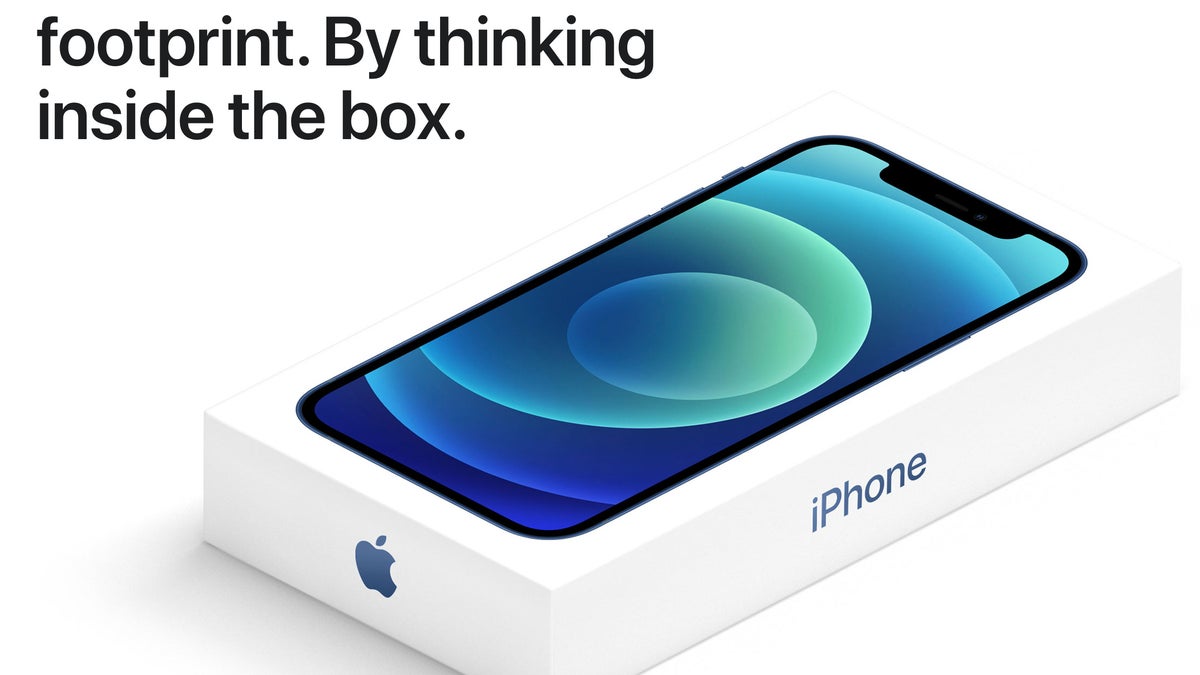When Apple unveiled the iPhone 7 at their Keynote event, they highlighted how they removed the headphone jack – it took “courage” to do so! This statement immediately resulted in various trolls and memes; many deemed the headphone jack removal as Apple’s expensive excuse to sell the newly-released AirPods.
This theme of removing ports and useful accessories continues. With the iPhone 12, Apple infamously removed the charging brick and EarPods (in-box wired Apple headphones). Many companies soon followed suit, citing Apple’s profound reasoning: saving the environment. However, this strange decision seems more like a cash grab rather. Does removing charging bricks and other accessories save the environment?

Apple removed the charging brick and wired headphones with the iPhone 12 – Preslav Kateliev, PhoneArena
Understanding these companies’ reasons

Storage and distribution of iPhones at a warehouse – OSU
So, how does removing useful accessories save the environment? According to Apple, removing these items means a smaller overall packaging, so more boxes could be transported at once – up to 70% more units. Moreover, Apple suggests that over 2 million metric tons of CO2 emissions will be cut because of these changes.
However, this explanation was a mere publicity stunt. All firms desire cutting costs because it equates to more money saved and more profit. By removing these charging bricks and accessories, Apple could ship more goods in limited spaces. They can sell their iPhone for the same or higher prices without providing accessories, so their customers would have to buy the accessories themselves (like AirPods and charging bricks on the Apple Store).
The sale of these accessories on Apple’s store raises an interesting conundrum. If Apple’s selling these bricks and accessories, wouldn’t that just force customers to make extra purchases and causes more product shipment?
Evaluating this decision
As you could guess, buying chargers and accessories separately does hurt the environment. The obvious side effect of this purchasing trend would be more unnecessary shipping waste and more emissions released due to these separate deliveries. As a result, these emissions are more spread out instead of occurring all at once.
AirPods and Beats bluetooth headphones – Benjamin Mayo, 9to5Mac
In the case of Apple, the charging brick dilemma is frustrating. Before the iPhone 12, all iPhones came with a USB-A charging brick, but the charging wire included with the iPhone has a USB-C connecting end. Essentially, if loyal Apple customers wanted to use charging bricks from their current Apple products, they simply can’t – the wire doesn’t fit in! So, these customers would be forced to buy a charging brick either from Apple or another seller.
Apple made over $6 billion through their “no accessory” initiative. How did they make this money? They saved costs, but they also sold their own charging bricks and wireless accessories like their AirPods and Beats lineup of wireless sound products.
Conclusion
While Apple was the test case for this blog, other companies have followed suit with the whole “don’t sell in-box items so that customers buy our other products” agenda. There’s really no set solution to this issue either. When companies claim to reduce their carbon footprint on the environment, they’re correct! But their reduced footprint is nullified by consumers buying accessories from other vendors or even these companies themselves. As a tech consumer yourself, you can save the environment by saving wires and not unnecessarily upgrading tech; that way, you don’t contribute to carbon emissions and e-waste (sorry about the shameless plug).
I enjoyed reading this! I did not know that Apple said they did this to help the environment. As you said, it makes no sense to me, and it just seems like they wanted to save money. Maybe they supported the environment since people don’t have two headphones now and buy one, but it seems that it doesn’t make much difference. I loved the pictures and how clean they made the blog seem.